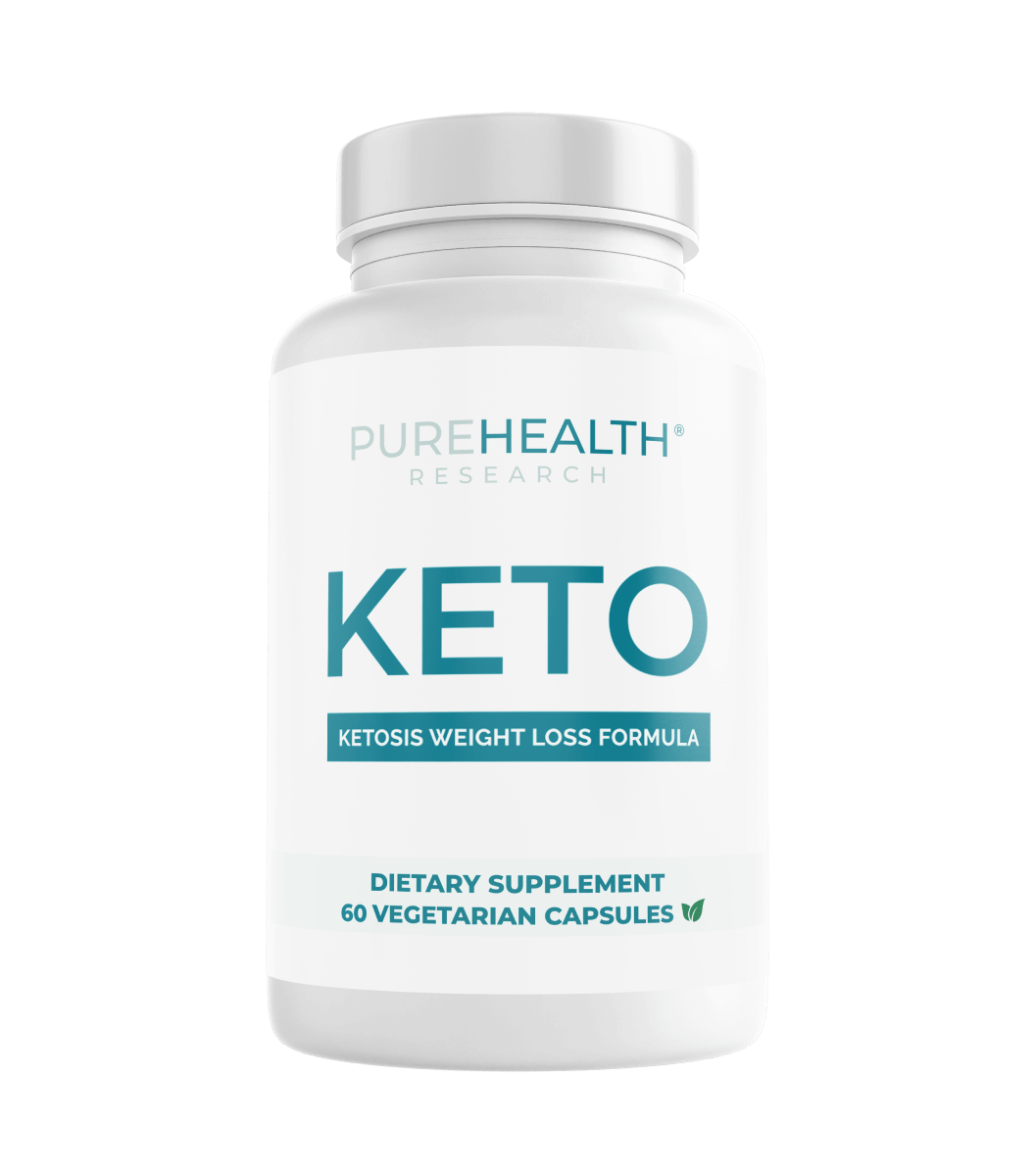Can the Keto Diet Cause Constipation?
Frustrated by constipation and keto diet woes? These 7 easy and practical adjustments may restore your digestive harmony!
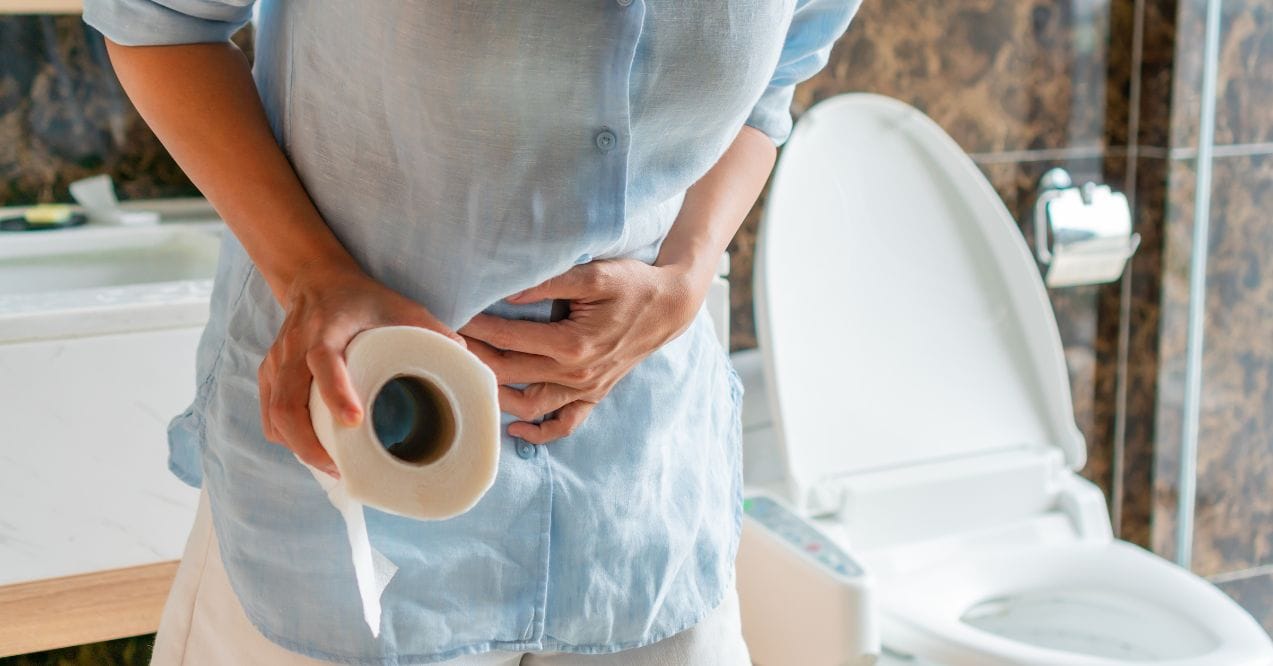

Constipation and keto often become companions when transitioning to a low-carb lifestyle. Shifting from a standard diet to one that limits carbohydrates can create significant changes in how your digestive system functions. While the keto diet offers numerous potential advantages for weight management and energy levels, some individuals experience digestive slowdowns during the adaptation period.
This temporary discomfort doesn’t mean you need to abandon your nutritional goals. With thoughtful adjustments, you can maintain ketosis while supporting healthy digestion. This article explores why constipation occurs on a ketogenic diet and provides practical solutions to keep your digestive system working smoothly.
Why Does the Keto Diet Cause Constipation?
The ketogenic diet fundamentally changes how your body processes food and manages fluids. When constipation and keto diet coincide, several physiological factors are typically at play. Your digestive system must adapt to processing higher fat content, different fiber sources, and altered fluid balance.
Knowing these mechanisms may help you make informed changes to maintain digestive comfort without compromising your nutritional goals. Let’s explore the primary factors that contribute to constipation when following a ketogenic eating plan.
1. Lower Fiber Intake
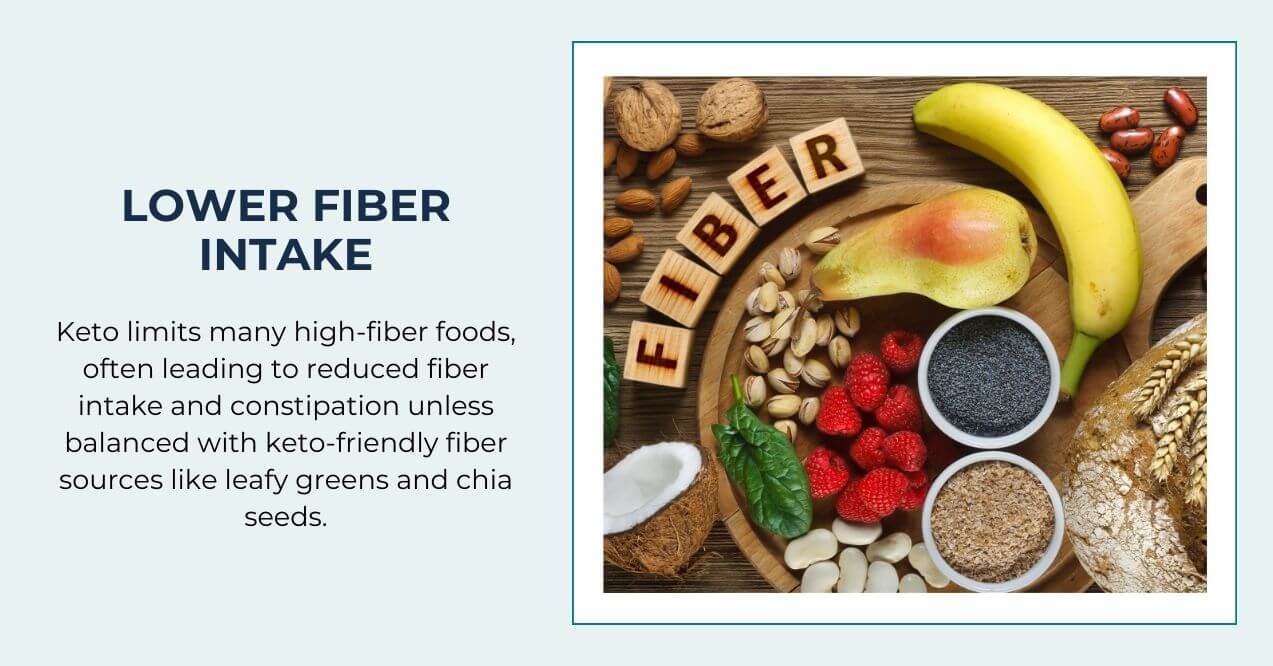
Many high-fiber foods like fruits, whole grains, and legumes are limited on keto due to their carbohydrate content. Fiber adds bulk to stool and supports regular bowel movements by drawing water into the intestines and feeding beneficial gut bacteria. Most adults need 25-38 grams of fiber daily, but this can be challenging when limiting carbs.
With fewer traditional fiber sources available, many people experience a significant drop in total fiber consumption. This reduction affects both soluble fiber, which forms a gel-like substance in the gut, and insoluble fiber, which adds bulk to waste.
Keto-friendly alternatives like leafy greens, flaxseeds, chia seeds, avocados, and small portions of berries can provide necessary fiber while maintaining ketosis. Tracking both net carbs and fiber intake can help balance digestive needs with ketogenic goals.
2. Initial Water Loss & Dehydration
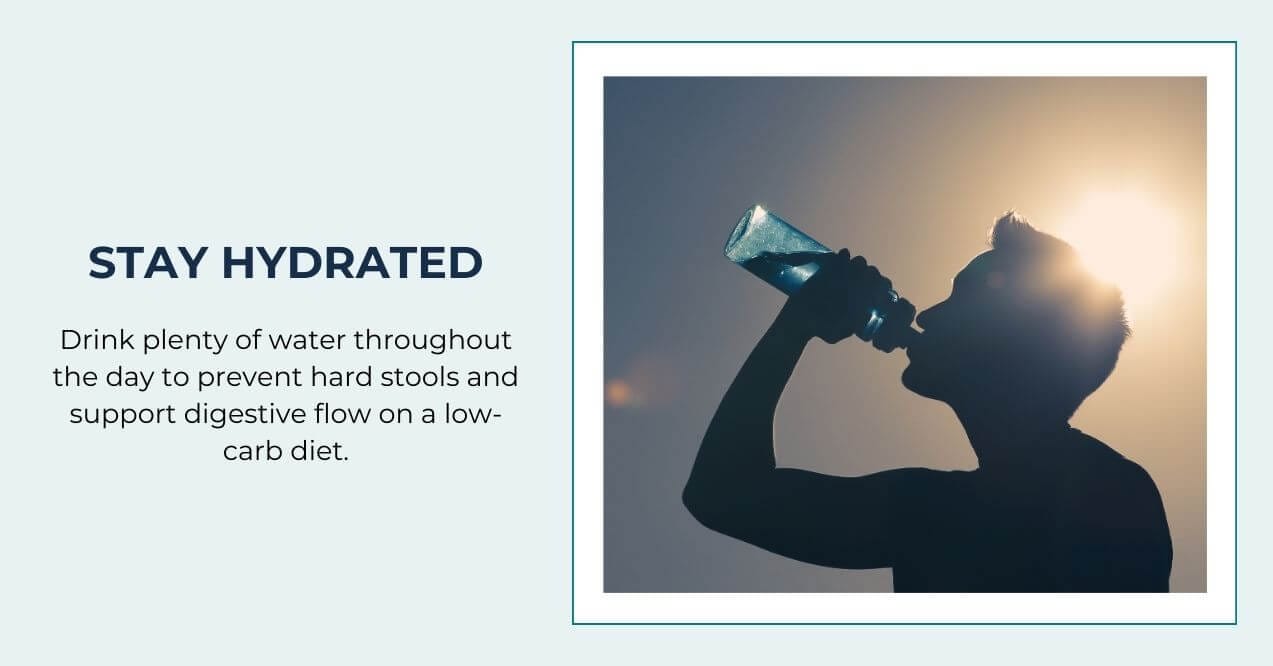
When beginning keto, your body depletes glycogen stores, releasing bound water. Each gram of glycogen holds approximately 3-4 grams of water, which explains the rapid initial weight loss many experience. This substantial fluid loss can lead to dehydration if water intake doesn’t increase accordingly.
Without adequate hydration, your colon absorbs more water from digestive matter, resulting in harder, drier stools that are difficult to pass. The lack of moisture slows transit time through the intestines, compounding constipation issues.
Signs of dehydration include darker urine, dry mouth, increased thirst, and headaches. Increasing water consumption to at least 2-3 liters daily and maintaining proper sodium, potassium, and magnesium levels become essential for preventing constipation with keto diet. Many find that adding a pinch of salt to water helps retain fluids better during this transition.
3. Changes in Gut Bacteria

Your gut microbiome thrives on specific nutrients, including certain fibers found in higher-carb foods. These beneficial bacteria play vital roles in digestion, immune function, and even mood regulation. A sudden shift to keto can temporarily disrupt bacterial populations that aid digestion, particularly those that ferment carbohydrates.
Different bacterial species specialize in breaking down specific food components. When you drastically change your diet, you essentially change the food supply for your gut inhabitants. This microbial adjustment period may slow transit time and alter stool consistency as certain bacterial populations decline while others increase.
The adaptation process typically takes 3-4 weeks as your intestinal flora reshuffles to accommodate your new dietary pattern. During this transition, digestion may be less efficient, contributing to constipation. Consuming small amounts of prebiotic fibers from keto-friendly sources like jicama, onions, garlic, and leeks can support this bacterial transition while staying in ketosis.
Looking for more ketogenic meal ideas? Our 7-day vegetarian keto meal plan offers fiber-rich options that support digestive health while maintaining ketosis.
How to Manage and Prevent Constipation on Keto
Keto constipation doesn’t have to be an inevitable part of your low-carb journey. With some strategic additions to your diet and lifestyle adjustments, you can maintain regular bowel function while still enjoying the benefits of ketosis.
These practical approaches address the root causes of constipation on a ketogenic diet and provide solutions that work with your low-carb lifestyle rather than against it.
1. Increase Fiber Intake
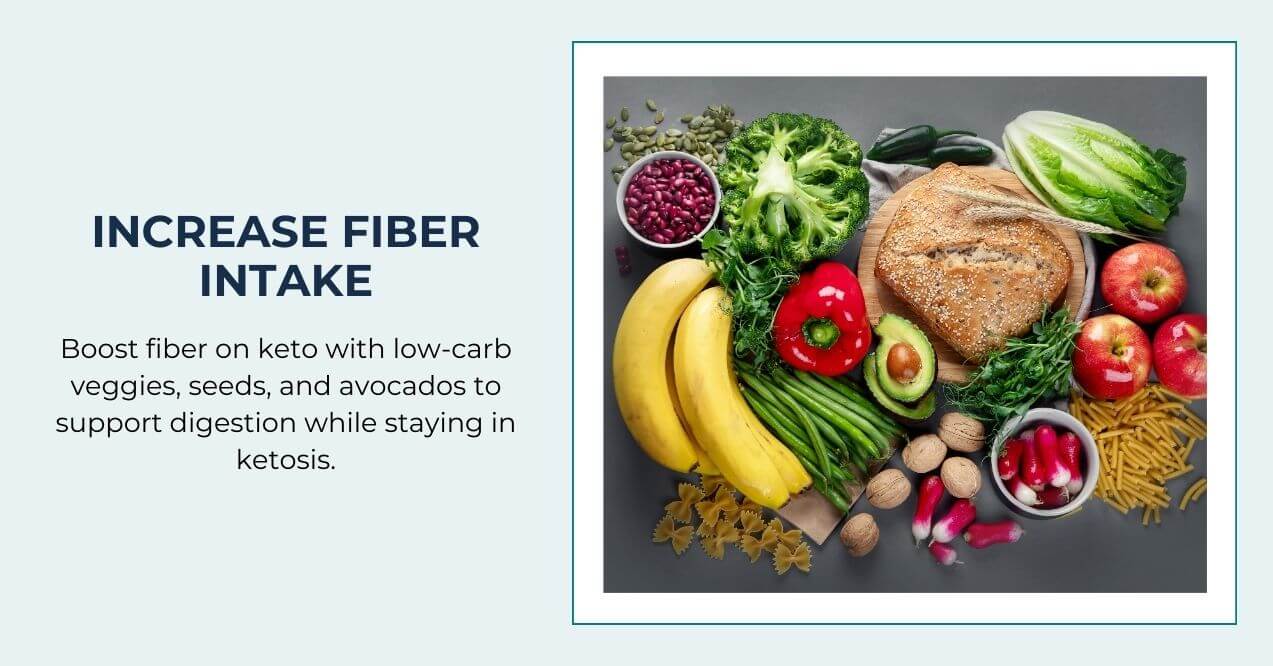
Maintaining adequate fiber while limiting carbs requires thoughtful food selection. Many assume that a low-carb diet must be low in fiber, but this isn’t necessarily true. Focus on non-starchy vegetables like spinach, kale, broccoli, cauliflower, and zucchini that provide substantial fiber with minimal carb impact. These options contain 2-4 grams of fiber per serving with very few net carbs.
Adding ground flaxseed or chia seeds to meals can significantly boost fiber content—just one tablespoon of chia seeds contains nearly 5 grams of fiber. Psyllium husk, another excellent option, provides 7 grams of fiber per tablespoon and can be mixed into liquids or added to keto baked goods. Avocados offer about 9 grams of fiber per medium fruit along with healthy fats.
Track your daily intake, aiming for 25-30g of fiber daily, while monitoring carbs to ensure you remain in ketosis. Gradually increase fiber to allow your digestive system time to adjust.
2. Stay Hydrated

Water is essential for maintaining soft, passable stools. On keto, you need more water than usual to compensate for the initial fluid loss and lower water content in high-fat foods. Without adequate water, the large intestine absorbs too much moisture from waste material, leading to hard, difficult-to-pass stools.
Aim for at least 8-10 glasses daily, more if physically active or living in hot climates. A practical approach is drinking half your body weight in ounces—if you weigh 160 pounds, that’s 80 ounces of water daily.
Herbal teas (especially peppermint or ginger), bone broth, and infused water can contribute to your hydration goals while adding variety. Space your fluid intake throughout the day rather than consuming large amounts at once. Consider setting a timer or using a marked water bottle to track intake, especially during the first few weeks of keto adaptation.
3. Add More Healthy Fats
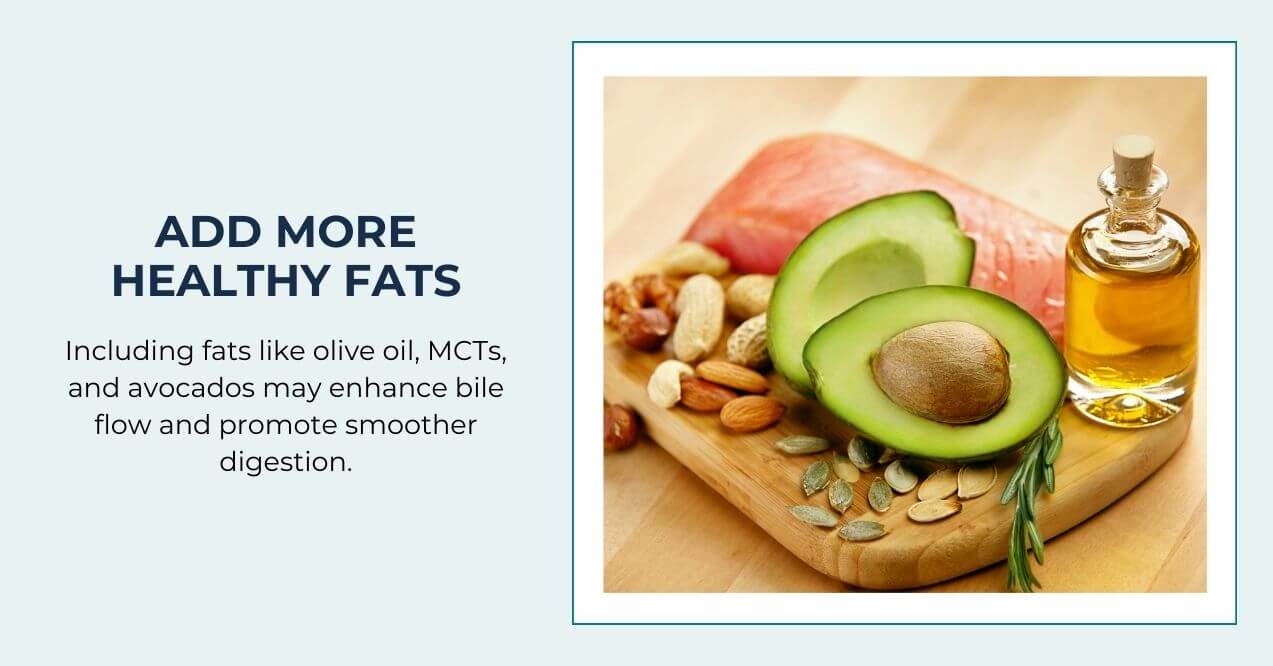
Contrary to common belief, adequate fat intake might actually support digestion rather than hinder it. Fats stimulate bile production, which acts as a natural laxative.
Include a variety of fat sources like olive oil, avocados, and coconut oil in your meals. MCT oil, in particular, can promote motility for some individuals when added gradually to the diet.
4. Incorporate More Movement

Physical activity stimulates peristalsis—the wave-like muscle contractions that move food through your digestive tract. Even mild exercise may significantly improve bowel function on keto by increasing blood flow to the digestive organs and strengthening the abdominal muscles that support elimination.
A daily 20-minute walk after dinner can make a noticeable difference in regularity. Activities that engage your core, such as gentle yoga poses like Child’s Pose, Cat-Cow stretches, and seated twists, directly stimulate the intestines.
For those with limited mobility, simple seated exercises or even deep breathing that engages the diaphragm can support digestive function. Consistency matters more than intensity—regular, moderate movement throughout the day is more beneficial for digestion than occasional intense workouts.
5. Adjust to Keto Gradually

Transitioning too quickly to very low carb intake can shock your digestive system and worsen constipation. A gradual approach allows your body time to adapt.
Consider reducing carbs progressively over 2-3 weeks rather than immediately dropping to 20g daily. This measured transition helps your digestive enzymes and gut bacteria adjust to the new fuel source.
Our collection of keto Thai food recipes offers delicious ways to enhance your low-carb meals while supporting digestive health.
6. Be Mindful of Sugar Alcohols
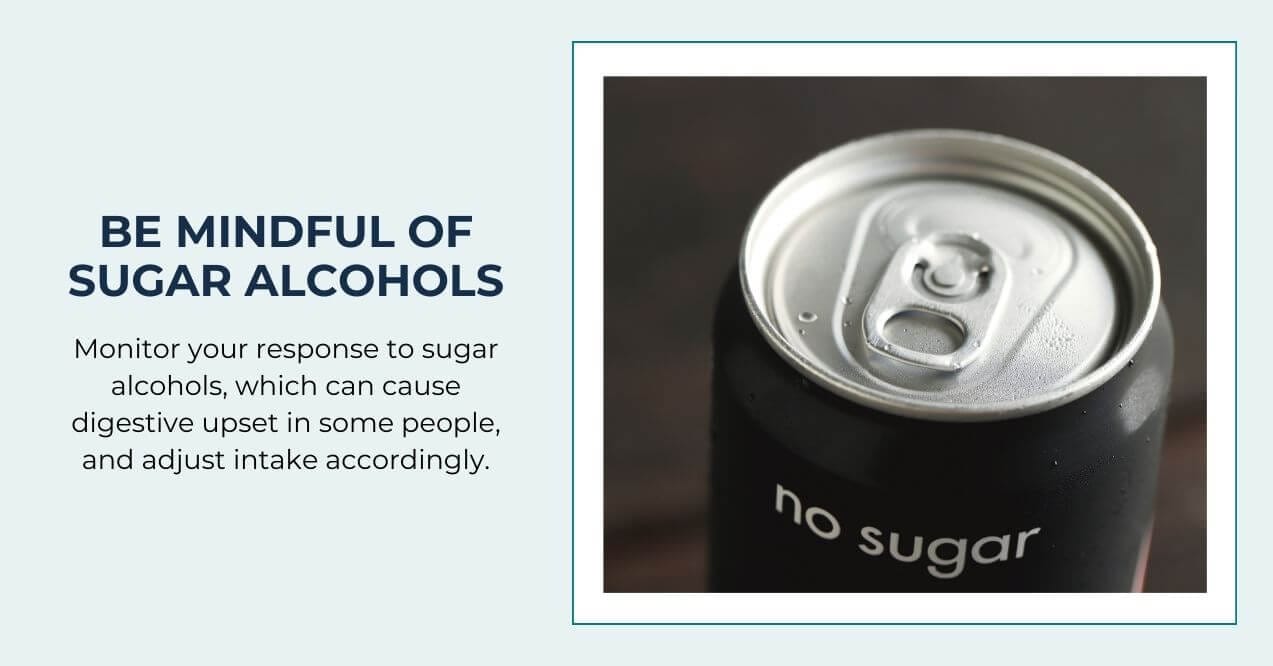
Many keto-friendly products contain sugar alcohols like erythritol, xylitol, maltitol, and sorbitol. These sweeteners provide the taste of sugar with minimal impact on blood glucose, but they’re only partially absorbed in the digestive tract. The unabsorbed portion ferments in the colon, potentially causing varying digestive responses.
These sweeteners affect everyone differently—some experience no issues while others find they cause significant digestive disturbances including bloating, gas, or paradoxically, either constipation or diarrhea. Maltitol tends to cause the most gastrointestinal distress, while erythritol is typically better tolerated.
Pay attention to how your body responds to these ingredients by keeping a food journal during your first month of keto. Start with small amounts of sugar alcohols and increase gradually if well-tolerated. If you notice a connection between these sweeteners and constipation, limit these products or choose alternatives with natural sweeteners like stevia, monk fruit, or allulose, which tend to cause fewer digestive issues for most people.
7. Consider Supplements for Keto Constipation
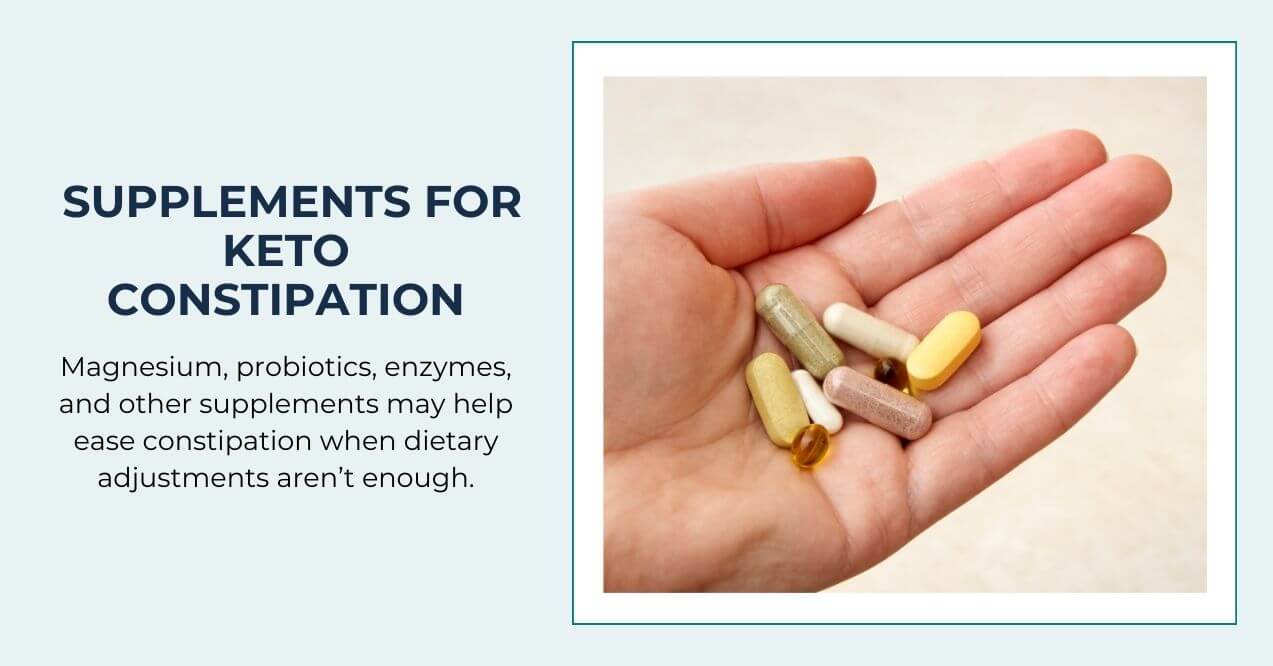
Certain supplements can effectively support digestion when dietary changes aren’t sufficient.
Magnesium is commonly used to support digestion by drawing water into the intestines, which may help soften stools in some individuals. Start with 200mg daily and increase gradually to find your effective dose, typically 300-400mg for most adults.
Probiotics containing Bifidobacterium and Lactobacillus strains support gut health during dietary transitions by repopulating beneficial bacteria that aid digestion. Look for formulations with at least 10 billion CFUs (colony-forming units) and multiple strains for broader benefits.
Digestive enzymes, particularly lipase, may assist in breaking down fats more efficiently, easing the digestive burden when transitioning to a higher-fat diet. Bile salts supplements can help those who have difficulty producing adequate bile for fat digestion, especially in older adults or people who’ve had gallbladder surgery. Vitamin C in moderate doses (500-1000mg) might also have a mild laxative effect while supporting overall health.
For comprehensive support on your ketogenic journey, many find products like Keto Formula helpful in maintaining overall wellness while adapting to a low-carb lifestyle. This supplement features natural ingredients such as MCT oil from coconuts, apple cider vinegar, and plant-based digestive enzymes that work together to support digestion and ease the transition to fat metabolism.

When to Seek Professional Guidance
While constipation on a keto diet is typically temporary and manageable with self-care strategies, persistent issues warrant professional attention. If digestive problems continue despite implementing the suggestions above, consult a healthcare provider.
Seek medical advice for constipation lasting more than two weeks, accompanied by severe pain, or if you notice blood in your stool. These could indicate underlying conditions unrelated to your dietary changes that require proper evaluation and treatment.
If you’re considering combining approaches for metabolic health, our article on intermittent fasting vs. keto explores how these strategies can work together while supporting digestive wellness.
Final Thoughts
Navigating constipation with keto diet challenges is a common experience that typically improves with time and targeted adjustments. The initial adaptation period can be uncomfortable but rarely indicates that the dietary approach isn’t suitable for you.
By prioritizing hydration, incorporating keto-friendly fiber sources, maintaining adequate healthy fat intake, and staying physically active, most people can achieve digestive comfort while enjoying the potential benefits of ketosis. Starting gradually and listening to your body’s signals allows for a smoother transition.
The connection between constipation and keto doesn’t have to derail your nutritional goals. With patience and these practical strategies, you can support your digestive health while adapting to a ketogenic lifestyle that works for your unique body and needs.
Increasing water intake, consuming more fiber from keto-friendly vegetables, adding magnesium supplements, and maintaining physical activity can effectively address keto constipation. Healthy fats like MCT oil may also help.
Most people experience digestive adjustment for 2-4 weeks when starting keto. With proper hydration, fiber intake, and electrolyte balance, constipation typically resolves as your body adapts to metabolizing fats.
Keto can temporarily alter digestion as your body adapts to higher fat intake and different fiber sources. With proper adjustments and attention to hydration, most digestive changes normalize without lasting issues.
Reduced bowel movements on keto often result from decreased fiber intake, initial dehydration, and changes in gut bacteria. Your body may also produce less waste when efficiently using fat for fuel.
Sign up for our Healthy Living newsletter!
Advertisement. This site offers health, wellness, fitness and nutritional information and is designed for educational purposes only. You should not rely on this information as a substitute for, nor does it replace, professional medical advice, diagnosis, or treatment. If you have any concerns or questions about your health, you should always consult with a physician or other health-care professional. Do not disregard, avoid or delay obtaining medical or health related advice from your health-care professional because of something you may have read on this site. The use of any information provided on this site is solely at your own risk.
